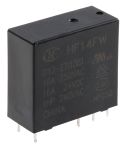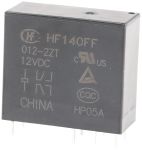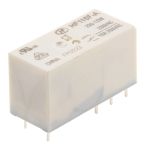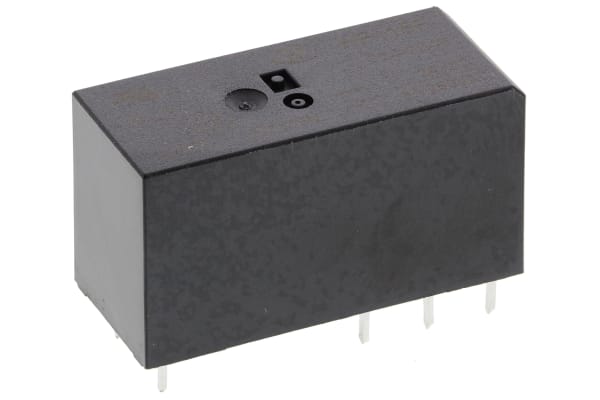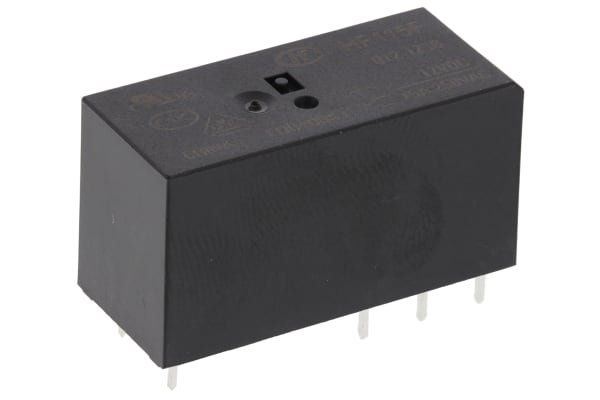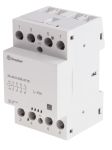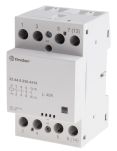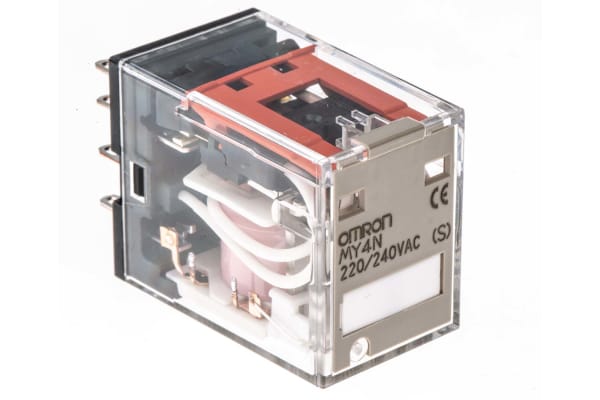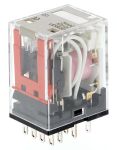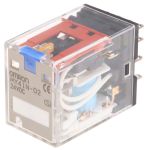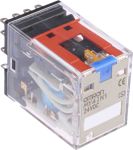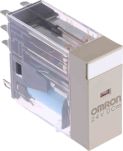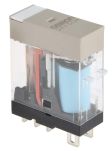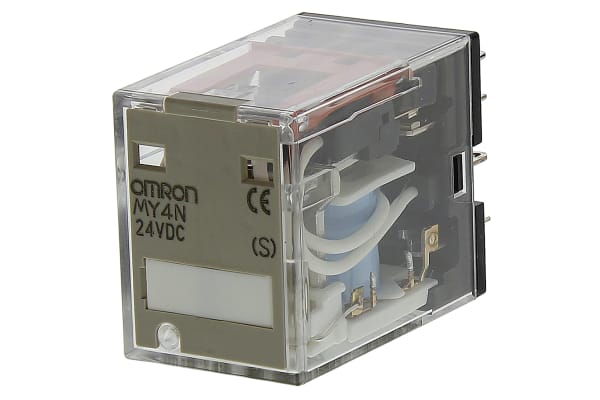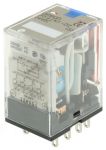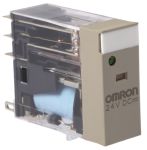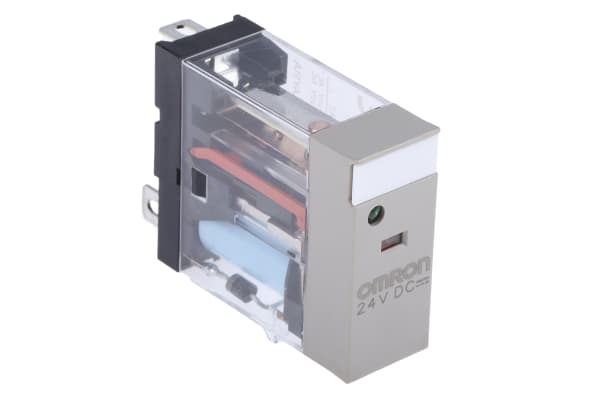Non-Latching Relays
Relays are electrical switches that are operated by electrical impulses with the primary function to open and close a circuit, they can also be referred to as industrial switches. There are 2 main types available, latching and non–latching relays.How do non-latching relays work?Non-latching relays are in a normally closed (NC) position and will stay in this state without power. When power passes through the circuit, the relay switched to a normally open (NO) position by using an internal coil to generate a magnetic force, holding this NO position. Once the current is turned off, it returns to the NC position. This makes non-latching relays well suited to push-button applications like keyboards and micro-controller input buttons.What are non-latching relays used for?Non-latching relays are highly durable and versatile components, making their performance long lasting and suitable for use in a wide range of applications, such as:Automotive enginesHousehold appliancesIndustrial machineryMedical equipmentTelecommunications equipmentWhat is the difference between latching and non-latching relays?Both types of relays in similar in design and function, however, a significant difference between them is that a latching relay will remain in the last position it when it was last powered, whereas a non-latching goes back to its normal position. This makes each more type of relay suitable for different applications. Considerations when selecting a relayWhen choosing a relay, it is important to consider a number of specifications to ensure it is fit for purpose, some factors include:Coil voltage – the required voltage to actuate the switching mechanism. If a voltage is too high this could damage the components, if it is too low then it will not actuate. Contact configuration – This is the state the contacts are in without power. For example SPST, single pole single throw.Contact material – the relay contacts are available in many materials that have certain properties. Common materials are gold, silver, tin oxide and nickel Coil power – the amount of power (watts) the coil operates at. This must match the power in the circuit for correct function. Coil resistance – the amount of resistance (ohms) in the circuit that the coil creates.
-
RS PRO, 12V dc Coil Non-Latching Relay SPDT, 20A Switching Current PCB Mount Single Pole
IDR56,955.27 -
RS PRO, 48V dc Coil Non-Latching Relay DPDT, 10A Switching Current PCB Mount, 2 Pole
IDR71,639.87 -
RS PRO, 12V dc Coil Non-Latching Relay DPDT, 10A Switching Current PCB Mount, 2 Pole
IDR58,109.06 -
RS PRO, 230V ac Coil Non-Latching Relay SPDT, 16A Switching Current PCB Mount Single Pole
IDR125,028.88 -
RS PRO, 24V dc Coil Non-Latching Relay DPDT, 8A Switching Current PCB Mount, 2 Pole
IDR58,004.17 -
RS PRO, 12V dc Coil Non-Latching Relay SPDT, 16A Switching Current PCB Mount Single Pole
IDR59,997.08 -
RS PRO, 24V dc Coil Non-Latching Relay SPDT, 16A Switching Current PCB Mount Single Pole
IDR64,192.68 -
RS PRO, 12V dc Coil Non-Latching Relay DPDT, 8A Switching Current PCB Mount, 2 Pole
IDR65,661.14 -
Finder, 24 V ac, 24V dc Coil Non-Latching Relay DPDT, 63A Switching Current DIN Rail, 4 Pole, 22.64.0.024.4610
IDR2,301,601.27 -
Finder, 24 V ac, 24V dc Coil Non-Latching Relay 4NO, 63A Switching Current DIN Rail, 4 Pole, 22.64.0.024.4310
IDR1,281,860.69 -
Finder, 240V ac Coil Non-Latching Relay 3PDT, 40A Switching Current DIN Rail, 4 Pole, 22.44.0.230.4710
IDR1,562,231.66 -
Finder, 240V ac Coil Non-Latching Relay 4NO, 40A Switching Current DIN Rail, 4 Pole, 22.44.0.230.4310
IDR955,023.45 -
Omron, 240V ac Coil Non-Latching Relay 4PDT, 5A Switching Current Plug In, 4 Pole, MY4N 220/240AC(S)
IDR144,538.42 -
Omron, 24V ac Coil Non-Latching Relay 4PDT, 5A Switching Current Plug In, 4 Pole, MY4N 24AC(S)
IDR214,185.38 -
Omron, 110/120V ac Coil Non-Latching Relay 4PDT, 5A Switching Current Plug In, 4 Pole, MY4N 110/120AC(S)
IDR116,008.34 -
Omron, 100/110V dc Coil Non-Latching Relay 4PDT, 5A Switching Current Plug In, 4 Pole, MY4IN 100/110DC(S)
IDR212,087.58 -
Omron, 24V dc Coil Non-Latching Relay 4PDT, 5A Switching Current Plug In, 4 Pole, MY4IN-D2 DC24(S)
IDR219,010.32 -
Omron, 24V dc Coil Non-Latching Relay 4PDT, 5A Switching Current Plug In, 4 Pole, MY4IN1 DC24(S)
IDR220,373.89 -
Omron, 24V dc Coil Non-Latching Relay DPDT, 5A Switching Current Plug In, 2 Pole, G2R-2-S 24DC(S)
IDR172,648.94 -
Omron, 24V dc Coil Non-Latching Relay SPDT, 6A Switching Current Plug In Single Pole, G2R-1-S 24DC(S)
IDR146,111.77 -
Omron, 24V dc Coil Non-Latching Relay 4PDT, 5A Switching Current Plug In, 4 Pole, MY4N24DCS
IDR369,632.36 -
Omron, 24V dc Coil Non-Latching Relay 4PDT, 5A Switching Current Plug In, 4 Pole, MY4IN1-D2 DC24(S)
IDR196,144.30 -
Omron, 24V dc Coil Non-Latching Relay DPDT, 6A Switching Current Plug In, 2 Pole, G2R-2-SND 24DC(S)
IDR310,264.62 -
Omron, 24V dc Coil Non-Latching Relay SPDT, 6A Switching Current Plug In Single Pole, G2R1SND24DCS
IDR196,668.75



